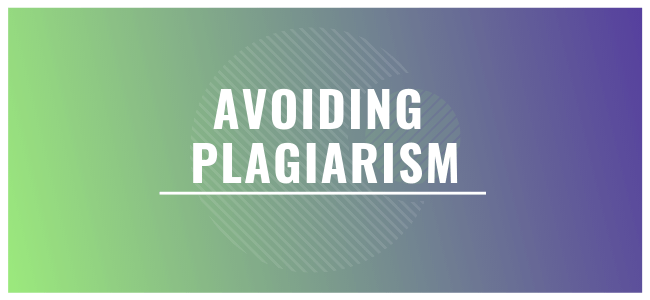Avoiding Plagiarism in English Research Papers

Plagiarism is one of the most serious offenses in academic writing. Whether intentional or accidental, presenting someone else’s ideas, words, or research as your own can lead to severe consequences, including academic penalties, loss of credibility, and even legal repercussions. In English research papers, where students frequently analyze literature, cite scholarly sources, and interpret texts, it is crucial to understand how to avoid plagiarism while maintaining academic integrity.
This article provides a comprehensive guide to avoiding plagiarism in English research papers, covering the different types of plagiarism, best practices for citation, proper paraphrasing techniques, and useful tools to check for originality.
What Is Plagiarism?
Plagiarism occurs when a writer uses someone else’s work without proper acknowledgment. It can involve copying text directly, rewording ideas without citation, or failing to give credit to original sources.
Types of Plagiarism
- Direct Plagiarism – Copying text word-for-word from a source without quotation marks or citation.
- Self-Plagiarism – Reusing one’s own previous work without permission or citation.
- Mosaic Plagiarism (Patchwriting) – Copying phrases from a source and slightly altering them without proper citation.
- Accidental Plagiarism – Forgetting to cite a source or misquoting a reference.
- Paraphrasing Without Citation – Rewriting an idea in different words but failing to credit the original author.
Why Is Avoiding Plagiarism Important?
- Maintains Academic Integrity – Ensures that students produce original, well-researched work.
- Respects Intellectual Property – Recognizes the contributions of other scholars.
- Avoids Severe Consequences – Academic institutions impose strict penalties for plagiarism, including failing grades or expulsion.
- Enhances Credibility – Proper citation strengthens arguments and demonstrates thorough research.
How to Avoid Plagiarism in English Research Papers
1. Understand Proper Citation Methods
One of the most effective ways to avoid plagiarism is to cite sources correctly. English research papers typically use MLA (Modern Language Association) format, though APA (American Psychological Association) and Chicago styles are also common.
Basic MLA Citation Rules:
- In-text citations: Include the author’s last name and page number.
- Example: Shakespeare explores ambition through Macbeth’s descent into tyranny (Shakespeare 45).
- Works Cited page: Provide full publication details at the end of the paper.
- Example:
Shakespeare, William. Macbeth. Penguin Books, 2003.
Basic APA Citation Rules:
- In-text citations: Include the author’s last name and publication year.
- Example: Fitzgerald critiques the illusion of the American Dream through Gatsby’s downfall (Fitzgerald, 1925).
- References page: List complete source details.
- Example:
Fitzgerald, F. S. (1925). The Great Gatsby. Scribner.
2. Use Quotation Marks for Direct Quotes
When including an author’s exact words, always use quotation marks and cite the source.
❌ Plagiarized: Shakespeare says ambition leads to moral decay and destruction.
✅ Correct: Shakespeare states, “Vaulting ambition, which o’erleaps itself and falls on the other” (Macbeth 1.7.27-28).
3. Paraphrase Correctly
Paraphrasing means rewriting someone else’s ideas in your own words while still giving credit.
Steps for Effective Paraphrasing:
- Read and understand the original text.
- Rewrite the idea using different words and sentence structures.
- Cite the source to acknowledge the original author.
Example:
🔴 Plagiarized: Gatsby’s green light represents his unattainable dream, symbolizing the American Dream.
🟢 Correctly Paraphrased: In The Great Gatsby, Fitzgerald uses the green light as a metaphor for Gatsby’s impossible aspirations, reflecting the illusion of the American Dream (Fitzgerald, 1925).
4. Keep Track of Sources While Researching
Many instances of accidental plagiarism occur because students lose track of their sources. To prevent this:
✔️ Use research journals to record bibliographic details.
✔️ Use citation tools like Zotero, Mendeley, or EndNote.
✔️ Highlight or note down key quotes and paraphrased ideas during research.
5. Avoid Over-Reliance on a Single Source
Using only one source extensively, even if cited, may appear plagiarized. Instead, diversify references by:
- Including multiple scholarly articles.
- Comparing different literary interpretations.
- Providing personal analysis and original insights.
6. Use Plagiarism Detection Tools
Before submitting an English research paper, run it through a plagiarism checker to ensure originality.
Popular Plagiarism Detection Tools:
✔️ Turnitin – Used by universities to check academic papers.
✔️ Grammarly Plagiarism Checker – Helps detect unoriginal content.
✔️ Quetext – Provides detailed plagiarism reports.
✔️ Copyscape – Identifies duplicate content from online sources.
7. Cite Ideas and Not Just Quotes
Plagiarism is not limited to direct quotes—ideas, theories, and concepts must also be credited. If a scholar’s analysis influences your argument, include an in-text citation even if you paraphrase their idea.
Example:
🟢 Correct: Many critics argue that Hamlet’s indecision reflects the human struggle between action and consequence (Bloom 78).
Common Plagiarism Mistakes to Avoid
❌ Copying and pasting from online summaries – Always reference original literary texts and academic sources.
❌ Forgetting to cite secondary sources – When using interpretations from literary critics, give them proper credit.
❌ Assuming common knowledge applies to everything – While widely known facts (e.g., Shakespeare wrote Hamlet) don’t need citation, specific interpretations do.
❌ Using AI-generated content without review – AI tools can generate unoriginal or uncredited content, which must be checked and cited.
Final Tips for Maintaining Academic Integrity
✔️ Start research early – Avoid last-minute rush that leads to sloppy citations.
✔️ Ask your professor for guidance – Clarify doubts about proper citation styles.
✔️ Use university writing centers – Many institutions offer plagiarism-checking services.
✔️ Be honest about your research process – If unsure, always err on the side of citation.
Conclusion
Avoiding plagiarism in English research papers is essential for maintaining academic credibility and ethical writing practices. By properly citing sources, paraphrasing effectively, using plagiarism detection tools, and diversifying references, students can produce original and well-researched papers. Plagiarism is not just about avoiding punishment—it’s about contributing meaningful insights to literary discussions while respecting the intellectual property of others.
For expert guidance on research paper writing and plagiarism-free academic work, students can seek professional assistance from EssayResearchScholar.com, a trusted resource for assignment help and research support.
